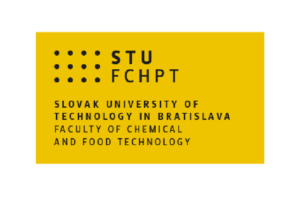
Slovakia Energy Cluster
#Bioenergy
#Biogenic Residuals & Waste Materials
#Hydrothermal Carbonization (HTC)
#Phytomining
#Renewable Energy
#Resource Efficiency
Contact
28 members
- The Accreditation committee of the Slovak Republic as well as the independent agency ARRA have granted FCHPT STUBA in the last 5 years the first place among the technical universities in Slovakia.
- Besides the basic research, the Faculty participates in applied research for industry and develops almost one hundred cooperation projects. The cooperation with many producers and companies allows for a swift application of research results to production.
- The quality of the scientific results from the projects has been documented by almost 200 articles published in Current Contents, more than 100 publications published in other journals and over 500 contributions in the form of conference abstracts per year.
- We are providing tailored R&D and engineering solutions for academia and industry - research and development of new products, materials, process and technologies; process optimization; prototyping; problem solving; testing, expertise and product analysis etc.
Members of cluster
Research institutions:
- Slovak University of Technology in Bratislava,
- Technical University in Zvolen,
- Slovak University of Agriculture in Nitra,
- University of Žilina,
- Slovak Academy of Sciences (Institute of Chemistry, Polymer Institute, Institute of Forest Ecology)
Companies:
Energy Edge ZC, Ltd., INTEHO, IKEA Industry, Bučina DDD, Ltd. (Kronospan), Mondi SCP Slovakia, BUKOZA Holding a.g. Slovakia, Leier Baustoffe SK, Ltd., Inventia Sweden, IRIS Spain, TZB Bremerhaven, ICARST SK.
Association:
- Slovak Biomass Association (SK-BIOM), member of AE-BIOM (European Biomass Association),
- Slovak Agricultural and Food Chamber,
- Slovak Association of Wood Processors,
- Pulp and Paper Industry Federation of Slovak Republic,
- Society of Wood Science and Technology (worlwide organization),
- Slovak Society of Chemical Engineering
Governmental institutions:
- Ministry of Education, Science, Research and Sport of the Slovak Republic
- Ministry of Economy of the Slovak Republic
- Ministry of Agriculture and Rural Development of the Slovak Republic
- Ministry of the Environment of the Slovak Republic
References and Experience
Education
In addition to the natural-science basis, students of FCHPT STUBA are educated also in technological and engineering subjects, such as Chemical Engineering, Environmental Engineering, Processes Control, Basics of Chemical and Food Processing Technology, as well as subjects on Biotechnology, Biochemistry, Economy, Law and Ecology etc. The Faculty has widely oriented programs, leading to the development of basic scientific fields in chemistry, chemical engineering, chemical technology and food processing. This wide scientific orientation of Departments allows for goal-oriented training of undergraduates and their quicker transition to industry.
Research
Our research is focused on basic and application research, mainly in the area of complex utilization and upgrading of biomass (lignocellulosic) materials. Research is funded mainly by state and international grants, and by related industrial partners. On the field of renewable resources and biobased materials we are focussing on biorefineries, biofuels, microcrystalline cellulose, biocomposites, wood liquification, pyrolysis, complex utilization of biobased raw materials, wood biomass waste utilization, processes and technologies, research and development on atmospheric plasma appli¬cations on biomass, degradation, stability and durability of natural polymers etc.
Past important projects
- SUSTAINPACK - Integrated Project FP6 No. NMP3-CT-2004-500 311: Innovation and Sustainable Development in the Fibre-Based Packaging Value Chain (2005-2009) was the biggest and most important packaging research project ever undertaken. It was a four year research programme (2005-2009) with a budget of €30M. Of this, €16.8M was funded by the EU's Sixth Framework Programme. The purpose of SustainPack was to establish fiber-based packaging (or paper and board based packaging) as the dominant player in packaging within a dec¬ade. Team was comprised of a consortium of 35 partners from 12 countries representing packaging research associations, academia and industry.
- INITIALIZATION OF CENTRE OF EXCELLENCE FOR RENEWABLE ENERGY - Norwegian Financial Mechanisms, SK00023, (2006-2010)
- DURAWOOD (success story of FP7) - Research for SME´s project FP7/2007-2013 (grant agreement no.232296, 1,3 mil Eur): Development of novel solvent-free coating process for wooden facades
- KNIHA.SK - State research project 2003-2008 (2,7 mil Eur): Recovery, stabilization and preservation of traditional carriers of information in Slovakia. Post project activities are still on the run.
- Biomass – Source of chemicals and biofuels (Slovak research and development agency), (2011-2014)
- Biocatalysis development of a new generation for industrial chemical synthesis (2011-2014)
Projects in preparation
- The lignocellulosic biomass pretreatment methods to achieve its anaerobic decomposition and producing biogas. Most biogas stations in Slovakia use maize silage as the main substrate. Considering the significance of the agricultural production for population nutrition, it is more economical to use mainly biomas aside the food chain. Such biomas is often, from different reasons, hardly biodegradable. It is for instance the waste containing lignocellulose (corn straw, rapeseed straw, maize stalks, etc.), problematic are, e.g., industrial wastes with high content of sulfur or nitrogen (waste from pharmaceutical and agricultural and food processing industries). The goals of the research are aimed at the lignocellulosic biomas pretreatment methods to achieve its anaerobic decomposition and producing biogas. Mechanical, chemical, thermal and biological pretreatment belong to such methods. The intended outcome of this reaserch is the determination of technological parameters of selected biomas types pretreatment methods and the design of biogas production technologies using selected substrates, not used for this purpose in Slovakia until now.
- Energetic and material utilisation of forest and agricultural waste biomass by gasification. The research is focused on energetic and material utilisation of products of forest and agricultural waste biomass gasification. Catalytic gasification of biomass substantially increases amount of clean process gas from unit mass of raw material and also increases effectively of further utilisation. This research assumes utilisation of catalysts in gasification of waste biomass in situ and testing of their effect on a quality and amount of produced process gas in bench/pilot scale conditions. Experimentally determined optimal conditions for specific raw material gasification will be utilised for effective design of equipment of gasifiers for small and medium gasifiers. The quantitative data for specific raw material, obtained by thermal analysis will be implemented in mathematical model of gasification and results of simulation will be verified in existing bench/pilot scale equipment and this will provide reliable basis for knowledge transfer to real practice with utilisation mainly in small and medium enterprises.
- Optimization of small fast pyrolysis unite combined with a central biorefinery or gasification plant. Based on this idea for a relatively large region a sit of small fast pyrolysis units and one large biorefinery or gasification/power generation plant can be build. The solid Agro-waste can by pyrolysed in small local pyrolysis unites without the need of transportation to far destinations. Bio-oil can be easily transported to the central bio-refinery or gasification plant. For bio-char there are two options: - recycling of bio-char into the soil as fertilizer - transportation of bio-char to the same gasification plant for power generation. Gas fraction from the fast pyrolysis can be used inside the process.
- Treatment of biomass by Supercritical water Supercritical water (SCW) exists at pressures higher than 2.2 MPa and temperatures above 374oC. By treatment of biomass in supercritical water (and in the absence of added oxidants) organics are converted into fuel gases and are easily separated from the water phase by cooling to ambient temperature. The produced high-pressure (HP) gas is rich in hydrogen. Supercritical water gasification (SCWG) is appropriate for very wet agricultural residues (which are also not suitable for anaerobic digestion) - sewage sludge (fertiliser from biogas manure), VGF (vegetable, garden and fruit) waste, vines (rest-product ethanol production), trester (residue of wine production).
Network Focus
Enhancement of markets and competitiveness, Reinforced policy interaction and stakeholder engagement, Investments in research, innovation and skills, Increased levels of expertise, a better understanding of the supply chain and enables companies to learn from each other and to cooperate with each other, The ability of companies to combine complementary strengths and to arrange affairs of large scale for which the individual would not be able to compete in an open competition, Potential for large-scale production that can be realized through the specialized production in each of the companies, through joint procurement of raw materials with large discounts or through joint marketing, Strengthening social and other informal links, leading to the creation of new ideas and new companies, Improved information flow within the cluster, allow funders to recognize good entrepreneurs and business people to find good suppliers of services.
Unique Selling Point
The only regional network specialized in bio-economy in the Western Balkans


